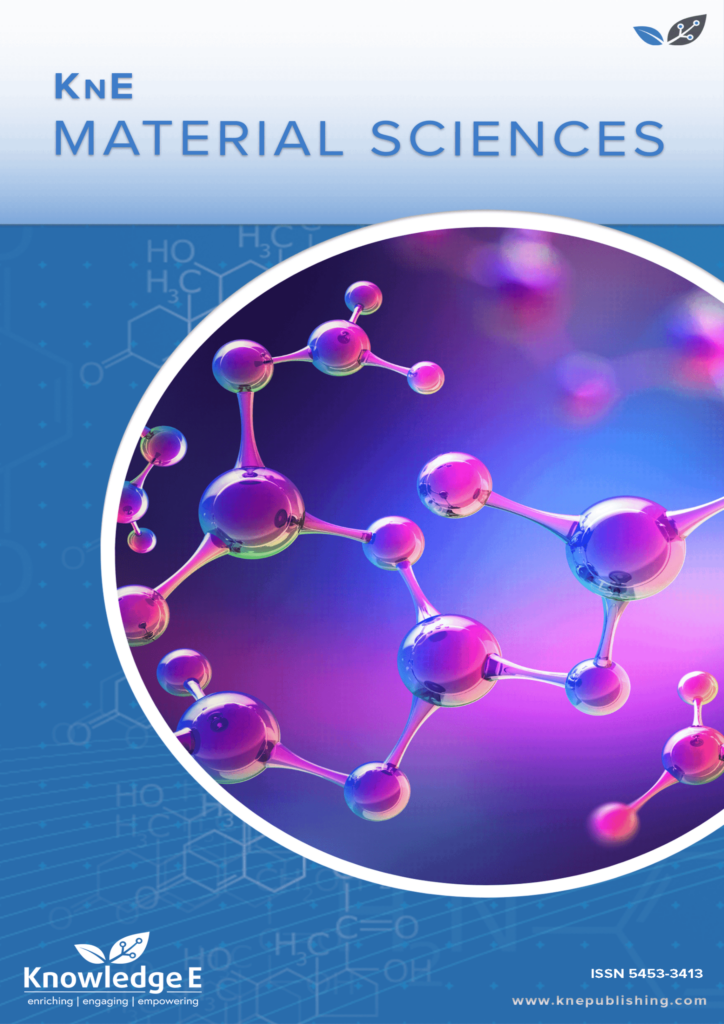
KnE Materials Science
ISSN: 2519-1438
The latest conference proceedings on physical materials, energy materials, electrical materials.
Preparation and Properties of Boron-Based Nano-B/CuO Thermite
Published date: Oct 12 2016
Journal Title: KnE Materials Science
Issue title: IV Sino-Russian ASRTU Symposium on Advanced Materials and Processing Technology (ASRTU)
Pages: 95-102
Authors:
Abstract:
We adopt precipitation to prepare the nanometer CuO and coat it on boron particles of micro- and nano-size. The morphology and coating result of B/CuO nanocomposite thermite were characterized using different techniques, such as scanning electron microscopy, X-ray diffraction, and energy-dispersive X-ray spectroscopy. The results indicated that the boron particles were coated completely by nanocomposite CuO and well distributed. The B/CuO nanocomposite thermite reaction process was tested by thermogravimetric/differential scanning calorimetry. The obtained reaction temperature of B/CuO particles is about 116.86° lower than that of boron particles. The B/CuO thermite and boron powder were added to Mg/PTFE propellant to be measured for their respective combustion performance. The results showed that the B/CuO-Mg/PTFE propellant burning rate increased by 12.87%, mass burning rate by 13.48%, and combustion temperature increased by 56.3° compared to the B-Mg/PTFE propellant. The above results indicate that the CuO coating of boron particles increases the combustion performance of propellant compared with uncoated particles.
References:
[1] T. Chen, X.-R. Zhang, Y.-Y. Wang, L. Huang, and J.-W. Xiao, Effect of LiF coating on the thermal oxidation characteristics for boron powder, Hanneng Cailiao/Chinese Journal of Energetic Materials, 21, no. 1, 57–60,(2013).
[2] W. Ao, Y. Wang, H. Li, J. Xi, J. Liu, and J. Zhou, Effect of initial oxide layer on ignition and combustion of boron powder, Propellants, Explosives, Pyrotechnics, 39, no. 2, 185–191, (2014).
[3] B. Natan and A. Gany, Effects of bypass air on boron combustion in solid fuel ramjets, Journal of Propulsion and Power, 9, no. 1, 155–157, (1993).
[4] T.-K. Liu, S.-P. Luh, and H.-C. Perng, Effect of boron particle surface coating on combustion of solid propellants for ducted rockets, Propellants, Explosives, Pyrotechnics, 16, no. 4, 156–166, (1991).
[5] K. Sullivan, G. Young, and M. R. Zachariah, Enhanced reactivity of nano-B/Al/CuO MIC’s, Combustion and Flame, 156, no. 2, 302–309, (2009).
[6] G. Ren, D. Hu, E. W. C. Cheng, M. A. Vargas-Reus, P. Reip, and R. P. Allaker, Characterisation of copper oxide nanoparticles for antimicrobial applications, International Journal of Antimicrobial Agents, 33, no. 6, 587–590, (2009).
[7] T. Lei, F. Li, and Y. Wang, Preparation and application of nano copper oxide powder. Chem Ind Eng Proc, in Wang Y: Preparation and application of nano copper oxide powder. Chem Ind Eng Proc, 32, 2429–2433, 2429-2433, 32(10, 2013.